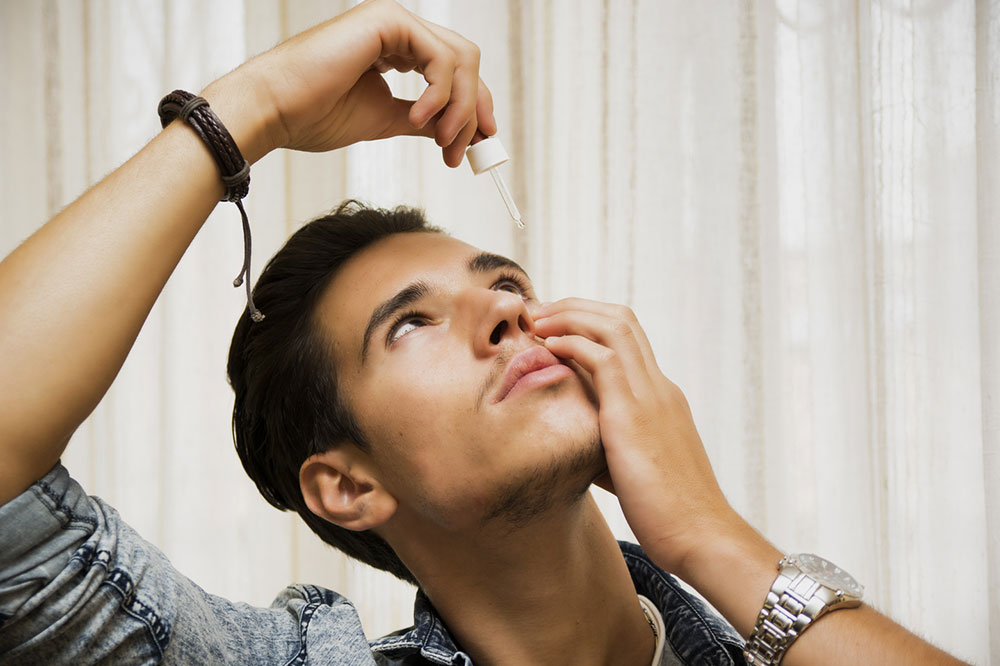Comprehensive Guide to Preventing and Managing Dry Eye Syndrome
This comprehensive guide offers practical and evidence-based strategies to prevent dry eye syndrome. From environmental protections to dietary supplements, learn effective habits to maintain healthy tear production and avoid discomfort. Protect your eyes today with these expert tips and improve your overall eye health for the long term.

Comprehensive Strategies for Preventing and Managing Dry Eye Syndrome
Dry eye syndrome, medically known as keratoconjunctivitis sicca, is a common ocular condition that affects millions worldwide. It causes discomfort, vision disturbances, and can significantly impact quality of life if left unmanaged. While symptomatic relief through artificial tears and ointments offers temporary comfort, implementing proactive preventive measures can substantially reduce the risk of developing dry eye issues or worsening existing symptoms. This extensive guide covers detailed and practical strategies to help you maintain eye health and prevent dry eye syndrome effectively.
Understanding the importance of protecting your eyes from environmental irritants is crucial. Numerous external factors contribute to dry eye problems, and minimizing exposure can help preserve your eye’s natural lubrication and health. Here are some key preventive measures:
Avoid drafts and wind exposure
Strong air currents from sources such as hair dryers, ceiling fans, ventilation systems, or open windows can accelerate tear evaporation, leading to dryness and irritation. To mitigate this, try to stay away from direct drafts, especially when your eyes are already sensitive. When outdoors, wearing wraparound sunglasses offers an extra layer of protection against wind and airborne debris, helping to keep your eyes moist and shielded.
Apply Warm Compresses Regularly
Using warm compresses is an effective method to stimulate natural oil production in the meibomian glands located along the eyelids. These glands are responsible for secreting oils that prevent rapid tear evaporation. To perform a warm compress, soak a clean cloth in warm water, wring out excess moisture, and place it over closed eyelids for about 5-10 minutes. This practice helps soften any blockages in the oil glands, promoting healthier tear film. Additionally, gentle eyelid cleaning with baby shampoo diluted in clean water can help remove debris and bacteria, further reducing inflammation and improving eyelid function. Be sure to rinse thoroughly to prevent irritation and maintain eyelid hygiene.
Incorporate Omega-3 Fatty Acids into Your Diet or Supplements
Research has indicated that omega-3 fatty acids play a vital role in maintaining healthy tear production and reducing inflammation associated with dry eye syndrome. Common dietary sources rich in omega-3s include oily fish such as salmon, mackerel, and sardines, as well as plant-based options like flax seeds, chia seeds, and walnuts. However, for individuals unable to consume sufficient amounts through their diet, omega-3 supplements can be an effective alternative. Before starting supplementation, it is advisable to consult a healthcare professional to determine the appropriate dosage based on individual health status and needs. Consistent intake of omega-3s can significantly improve eye comfort by enhancing tear quality and reducing inflammation.
Maintain Proper Indoor Humidity Levels
Indoor environments, especially during the colder months or in arid climates, often have low humidity levels due to heating systems and dry air. Low humidity exacerbates dry eye symptoms by increasing tear film evaporation. Using a humidifier adds moisture to the indoor air, creating a more comfortable environment for your eyes. If a humidifier is unavailable, placing bowls of water near heating sources or regularly moistening radiators can also help maintain adequate humidity levels. This simple adjustment can be surprisingly effective in preventing dry eye discomfort and maintaining overall eye health.
Eliminate or Reduce Exposure to Tobacco Smoke
Exposure to tobacco smoke, whether active or passive, is a known risk factor for dry eye syndrome. Cigarette smoke irritates the ocular surface, accelerates tear film evaporation, and leads to inflammation. Quitting smoking provides numerous health benefits, including protecting your eyes from dryness and related complications. For smokers looking to quit, seeking support through healthcare professionals, support groups, or cessation programs can make the process more manageable. By reducing exposure to smoke, you can significantly improve your eye comfort and overall health.
Protect Your Eyes in All Environments
In addition to these specific strategies, adopting general habits such as blinking regularly, especially during screen time, can prevent tear evaporation. The 20-20-20 rule—every 20 minutes, look at something 20 feet away for 20 seconds—can help reduce eye strain and dryness associated with prolonged screen use. Maintaining proper hydration throughout the day, such as drinking plenty of water, supports overall eye health. Wearing protective eyewear in windy or dusty environments further shields your eyes from irritants.
Since dry eye syndrome is a chronic condition that can fluctuate over time, establishing a consistent routine of preventive habits is essential. Regular eye examinations and consultation with an eye care professional allow early detection and tailored management strategies. By understanding and implementing these proactive measures, you can enjoy improved eye comfort, enhanced visual function, and a higher quality of life.





